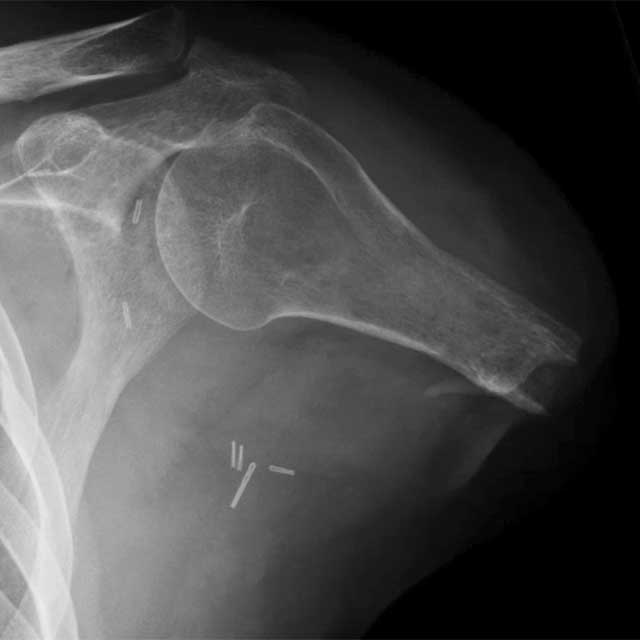Osseointegration is a surgical procedure that aims to offer better quality of life and improved function and mobility to people who have had an amputation. Surgery involves inserting a metal implant into the bone of a residual limb, which then attaches directly to a prosthesis, eliminating socket-related issues. Surgery can be performed in one or two stages, depending on the implant system.
On This Page:
Benefits of OI | Why Choose Johns Hopkins | Our Experts | Patient Stories
Benefits of Osseointegration
No Socket-Related Issues
Osseointegration eliminates the need for a socket, solving common prosthetic issues such as excessive sweating, pain, pressure, chafing and skin sores.
Increased Strength and Mobility
Osseointegration allows for bone and muscle mass in the residual limbs to slowly increase, as the bone and muscles are being actively used. As you get stronger, mobility increases as well.
Feeling More Connected
Because the implant attaches directly to the bone, it provides improved osseoperception — the ability to sense the world through the limb (such as sense the terrain you walk on), and osseoproprioception — the ability to sense where the prosthesis is without looking at it.
Better Range of Motion
A bone-anchored implant allows for improved range of motion when compared with traditional prostheses. As a result, the gait becomes more natural, you can walk longer distances and sit more comfortably.
Osseointergration FAQs and Processes
Osseointegration Pathways at Johns Hopkins
Osseointegration Q&A with Brock Lindsey
Osseointegration: Why Choose Johns Hopkins?
- The Johns Hopkins Hospital, one of the few locations in the country that offers this innovative procedure, provides a full spectrum of care from evaluation to post-surgical rehabilitation.
- Our multidisciplinary team includes experts in orthopaedics, plastic surgery, prosthetics, rehabilitation and other fields who work together to guide you through each step of the process.
- We offer osseointegration for people with a variety of limb loss conditions, including amputations above and below the knee, above and below the elbow as well as missing parts fingers. Our clinic even offers this procedure to patients with bilateral (both limbs) amputations.
- Three types of osseointegration implant systems are currently available in the U.S.: Swedish, Australian and U.S. implants. Our expert team has training in all three and can help you determine which option is right for you.
Our Osseointegration Team
Physicians
Extended Care Team
Francis Hwang, DNP, ANP-BC
Expertise: Orthopaedic surgery in sports medicine, orthopaedic oncology and musculoskeletal and general surgery; Care coordination of OI patients with pre- and post-surgical management; Consultations with prosthetists and OI candidates.
Research Interests: Perioperative education in osseointegration, quality of life after osseointegration surgery
Contact: fhwang2@jhu.edu

Mark Hopkins, PT, CPO, MBA
Expertise: amputee rehabilitation, prosthetic and orthotic fabrication

Hear From Our Patients
Gwenna's Story
Kleyton's Story











